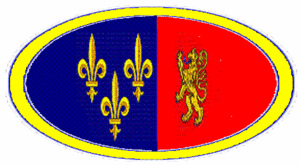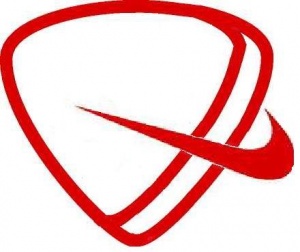National Motors Corporation
| National Motors Corporation | |
|---|---|

| |
| Type | Privately held company |
| Slogan | Driving America |
| Founded | 1947 |
| Location | Richmond, Virginia, NAL |
| Key people | CEO & Director |
| Employees | 75 000 |
| Industry | Automotive industry |
| Products | Automobiles and light trucks |
| Revenue | |
National Motors Corporation (NMC for short or Nacional Motors Corporacion in IB English) is a car manufacturing corporation from the North American League. It’s the smallest of the “Big Three” (the others are Dorris Motorworks and Consolidated Motors Corporation), being both the third best-selling car corporation in NAL (representing 10% of cars sales volume) and all North America.
History
Early history
André Picard was a french businessman with a passion for cars and engines who founded his own car company in 1909, La Societé Automobile Picard (The Picard Automobile Society). It was based in east Francy, France, and not far from the German border.
Before the First Great War, Picard cars sold reasonably well, soon becoming one of the leading French car makers.
During the First Great War the factory was destroyed by the German bombings. With the end of the war, the factory was rebuilt and in 1920, new Picard cars were back to the roads.
Picards were selling well and in 1923 the company began exporting, first to the French colonies and then to France’s neighbouring countries. By the end of the decade Picard was selling cars in most European countries.
In 1930 it started to export to North America. The cars were well accepted in Louisianne and the NAL, although their sales volume expansion was always limited due to competition with local car makers.
Moving to America
With the start of the Second Great War all French car makers were forced by decree to replace their car manufacturing with military vehicles and weapons. André Picard disliked this; he wanted to produce cars and not guns. But Picard’s factory didn’t have time to produce either. The factory was once again destroyed by the german bombings in 1941. So ended the production of the Picard car line in France.
Tired of unstable borders, warfare and the French government’s intervention in his business, Picard decided to move to North America, at the time the only continent where mass production of civilian cars continued.
Picard arrived in the NAL in September 1942 and started to make contacts in order to ask for loans to rebuild his business. The company was re-established in 1944, called now Picard Motor Company.
Expansion
For a new company Picard cars sold reasonably well, thanks its reputation from the pre-war period. In a time that car sales were stagnating due to the war, Picard cars sales grew. With more profits the company started to expand. It acquired Phaedra Motor Company in 1947. Such was the birth of the third major North American car manufacturing group, now called National Motors Corporation.
In 1948 NMC also acquired Quicksilver Automobile Corporation, a manufacturer of sporty cars.
Post war
With the end of war in Europe, Picard intended to return to the European car market. But he soon experienced the same difficulties as the other North American manufacturers. Europe was then too ruined and too poor to buy large cars. Also National Motors had another handicap: it didn’t have a luxury brand. The European market was soon abandoned after just a year.
Picard imitated CM’S marketing strategy of positioning its several brands in order to appeal to different kinds of car buyers and to avoid cannibalism among the group’s brands. By that time all three of NMC’s brands cannibalised each other's sales.
NMC then positioned Phaedra as a cheap, entry-level car. Above it there was Picard and finally Quick (as Quicksilver was renamed) at the top of the corporate hierarchy. No new, more upmarket, brand was created. Picard understood well that for that high-class kind of buyer, it wasn’t enough just to make expensive and luxury cars. Upmarket cars should have also have history and status to support their name; a lesson that CM would learn well in the failure of their Fregáte brand thirty years later.
But NMC didn’t just copy the others' marketing strategies. It created its own that would be copied by its competitors. It shortened the models’ life span and introduced the mid-life restyling. This caused higher production costs, which were compensated for by making the models share the same engines and platforms.
Recent years
During the early 1960’s NMC tried to completely renew its car styling, but buyers didn’t accept the changes. All the new models had to be restyled to more ordinary styles to reverse the sales downfall.
Also during that decade, NMC was finally capable to return to the European market, as Europe was by then richer than ten years before. But NMC still faced the handicap of its lack of a luxury brand.
In 1974 NMC acquired an almost bankrupt but highly prestigious car maker, Chalmers Motor Car Company. During the next two years the Chalmers-brand car line was made completely new, breaking radically with its past. It was a success as Chalmers’ sales progressed 10% in 1975 and 25% in 1976. By 1980 it was already selling as many cars as Adirondack (from CM) and Winton (from Dorris), the leading North American luxury car brands.
During the 1970’s NMC followed the upsizing tendency as oil prices turned quite low as result of the Oil Crisis of Hijra 1393, caused by overproduction of oil by Iraaq.
Today NMC remains the smallest of the “Big Three”. Even so sales volume seems to have a constant progression. NMC also has the least overseas market penetration among the major North American automotive groups but recently (December 2008) acquired important share parts from japanese Matta Motors and australasian Holden-Frost Motors which will make possible a further expansion throughout the Pacific Rim car markets.
Marketing innovations
Sharing platforms and engines
During the 1950’s NMC innovated by creating the so-called SCMF platform system. Each letter is the initial of a different kind of car platform distinguished by size. SCMF means Subcompact-Compact-Mid Size-Full Size.
In corporate code definition a letter is followed by a number. For example C4 means the fourth generation of a compact car.
The SCMF denomination was also adopted later by other car makers worldwide so as by specialised car press since then.
All NMC’s cars share common platforms and engines in order to reduce production costs.
Restyling
The other major contribution to car marketing by NMC was shortening the life span of each car model by having a mid-life restyling. Such permitted the company to quickly update its models with consequent sales progression.
NMC’s brands
From the lower priced to the higher priced brand:
Phaedra
One of the original companies which formed NMC in 1947. It was founded in 1928 and had until the 1950’s a position similar to Picard car line. With the reforms it was positioned at low priced field competing directly against Dover, from Consolidated Motors.
At that time this was disliked by its workers, who went on strike. On a speech André Picard told to his workers “It’s not a dishonour to make cheap cars. The poor also need to drive!”
Phaedra cars use S, C and M platforms.
Picard
The group’s leading brand. Founded originally in 1909, in France, and refounded in 1944, in NAL. Founding brand of NMC, in 1947. Originally had a similar luxury position as Phaedra within the corporation. Became the mainstream and generalist brand competing directly with Chevalier, from CM, and Dorris, from Dorris Motorworks. Is the best selling brand of NMC.
Uses the C, M and F platforms, not with much luxury. M and F Picard cars are often used as taxis.
Quick
Sporty mid-class division from NMC. It was founded in 1903, being one of the oldest still-existing North American car making companies.
It has always been much involved in car racing, which generated a solid and recognised brand name.
It competes directly with Potomag (from CM) and Astra (from Dorris).
Uses C, M and F platforms.
Chalmers
Up market division from NMC. Is the newest of all the NMC’s brands, it joined the group in 1974, after being independent since its founding in 1910.
Competes directly with Adirondack (from CM) and Winton (from Dorris).
Uses only F platforms.
Chalmers’ history
Chalmers Motor Car Company was founded by Jonathan Chalmers in 1910. Since then always had produced luxury cars.
In 1935 General Moderator Franklin Donald Rosenberg decided to replace Rolls-Royce cars with a NAL-made car to serve as official car of the Octagon House. Chalmers lost against Adirondack.
In post war years, with European luxury car makers coming out of the ashes, Chalmers wasn’t able to compete and started a progressive sales volume recession, although its solid name remained intact.
By the early 1970’s the company was almost bankrupt and close to extinction. It was one of the last leading independent North American car makers which always escaped acquisition by any of the “Big Three”. NMC, which needed a luxury brand to complete its range, acquired it at a low price in 1974. Everyone thought it was one of the worst business actions in automotive history.
At that time Chalmers was a typical North American style luxury brand: extra long, ostentatious cars with tons of chrome and large grilles, just like any other of its local competitors.
With the acquisition by NMC all this changed. In just two years the whole Chalmers’ car line was renewed with the most revolutionary style and image change in many years among continental luxury car makers. It was the so-called “New Line”.
Its baroque styling was replaced by a new one rare in luxury conservative cars. All superfluous style “clothes” were abandoned (fins, chrome, etc.). The “New Line” made of Chalmers a very simple styled car. Straight lines with the least possible chrome used, just a bit in the grille drawing its perimeter and mostly painted in black plus the bumpers and small details across the car. The headlamps were hidden, as were the wheels. The car could be designed just with few lines, such was the simplicity. And most of all it was a real cut with its past style. Chalmers’ style became then rather simple, austere and sinister, in stark contrast with its baroque competitors.
Even the logo was replaced. An all black and minimalist new one replaced the old, very traditionalistic coat of arms.
The 1970’s were the upsizing period. Chalmers’ cars got really long, in average 17 feet long. Their backs became longer than their fronts. They could transport eight human bodies side by side within the trunk, a characteristic which was soon recognised by the Pègre. Chalmers became the car most often associated with the Pegre, a perception that was exploited both by cinema and TV series as well as by company’s advertisement.
The style changes were a true success as the brand’s sales figures grew, rivaling its American luxury competitors. Such success should have been then imitated by the others, but it never happened. Neither Adirondack nor Winton wanted to have their names associated with the Pègre.
To cultivate its sinister fame, since the early 1980's Chalmers have only been available in a single colour choice, black. Also, the windows have the most darkened glass that law permits.
Among the “New Line's” most famous cars is a 17 feet-long coupe with a single row of three seats.



